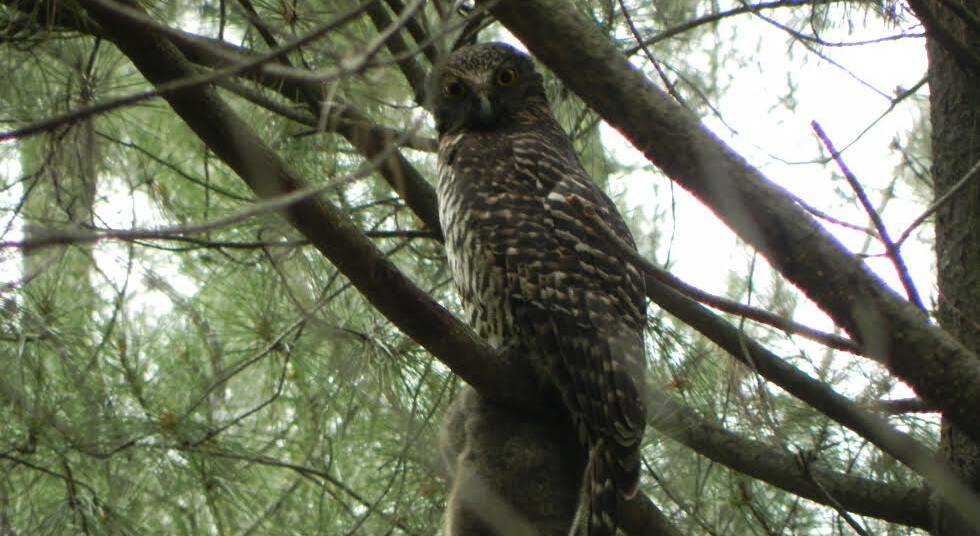
It’s our largest owl and it’s called the powerful owl.
Subscribe now for unlimited access.
or signup to continue reading
It measures 55 centimetres from beak to tail and it has large staring yellow eyes and huge yellow feet.
My local bird-observing trips rarely reveal the powerful owl.
It had been 10 years or more since I had heard or seen one until a couple of weeks ago.
The powerful owl calls most prominently in the autumn and winter, so I have made a few evening and night visits in recent years in search of the big grey-brown bird.
At last I have been rewarded – not by a sighting, but by hearing of the unmistakable double “woo-hoo” call.
While the bird’s name no doubt comes from its size, its call too is powerful.
It is far- carrying, with something of a cow-like quality. It carries well on a calm night.
To me it has an air of mystery, of wildness and a touch of earnestness as well.
I once knew the powerful owl quite well when living in the Linton area.
There it was heard fairly often and some of its daytime roost places were known.
Having now heard the call this month, I can search for the big bird with reasonable confidence when next in the area of its recent call.
The call was first heard at about 6.15pm and was still going when I left, well- satisfied, after 6.30pm.
No other nocturnal birds were heard during the hour or more that I was listening in the dark.
Today’s photo, by Ian Ashton, was taken in the Mt Cole area.
This bird has quite a large brush-tailed possum in its talons – a very substantial weight to carry.
The usual prey is ring-tailed possums, sugar gliders and birds the size of magpies and galahs.
More recently, again listening for nocturnal calls, but at another spot, the repeated “yip-yip- yip” of a sugar glider was a welcome sound.
THE WHITEFACE
Last Sunday’s outing by local bird observers to the Maryborough district resulted in several interesting birds being sighted.
One of these was the southern whiteface.
This small brown bird feeds on the ground like the yellow-rumped thornbill.
Sometimes the two species associate together.
The whiteface is a rarity in the Ballarat region, so we need to go to the Clunes area and northwards to see it.
It once occurred south of the Great Dividing Range, but no longer – at least not in the Ballarat region.
The species is a rather plain light brown bird with a small white forehead patch. This is where it gets its name whiteface.













